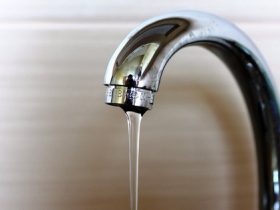Swift Steps for Decreased Water Pressure in Your Home
Swift Steps for Decreased Water Pressure in Your Home
Blog Article
Any individual is bound to have their own opinion about 9 Reasons for Low Water Pressure in Your House.

Low water pressure in your home can be a frustrating problem, impacting whatever from bathing to washing meals. If you're experiencing weak water flow, there are several possible reasons and remedies to explore. In this guide, we'll go over common factors for low tide pressure and functional steps to deal with the concern effectively.
Intro to Low Tide Pressure
Low water pressure happens when the flow of water from your taps, showers, and other fixtures is weaker than normal. This can make day-to-day jobs a lot more difficult and much less effective. Understanding the reasons for low water stress is vital to finding the right service.
Usual Causes of Low Water Pressure
Pipeline Obstructions
Over time, pipes can come to be clogged with natural resource, sediment, or particles, restricting the circulation of water. This is a typical issue in older homes with galvanized steel pipelines.
Deterioration
Deterioration within pipes can bring about leaks and decreased water stress. Rust accumulation can constrict water circulation, particularly in maturing plumbing systems.
Faulty Pressure Regulatory Authorities
Stress regulatory authorities are accountable for keeping regular water pressure in your home. If they malfunction, it can result in low water pressure or uneven circulation throughout your home.
Municipal Water System Issues
Sometimes, the issue lies outside your home. Metropolitan water concerns, such as main line leaks or maintenance work, can temporarily minimize water pressure in your location.
Just How to Diagnose Low Tide Stress
Checking Faucets and Fixtures
Begin by checking the water pressure at various faucets and components throughout your home. If the issue is separated to particular areas, it might suggest local issues.
Checking Pipes
Evaluate noticeable pipes for indications of leakages, deterioration, or obstructions. Take notice of any unusual audios, such as banging or rattling pipelines, which could show issues within the plumbing system.
Consulting with a Plumber
If you're unable to identify the root cause of low water stress, think about employing a specialist plumber to perform a comprehensive assessment. They can determine underlying problems and advise ideal options.
Do It Yourself Solutions to Fix Low Tide Stress
Cleaning Up Aerators and Showerheads
Natural resources can build up in aerators and showerheads, lowering water circulation. Remove and cleanse these components frequently to improve water stress.
Flushing Hot Water Heater
Debris buildup in the hot water heater can restrict flow and decrease effectiveness. Flushing the tank regularly assists eliminate sediment and keep ideal efficiency.
Examining Pressure Regulator
Ensure that the stress regulator is functioning appropriately. Adjusting or changing the regulator can help bring back proper water pressure throughout your home.
Clearing Up Clogs in Pipes
For minor obstructions, attempt making use of a plumbing serpent or chemical drain cleaner to clear blockages in pipes. Be cautious when making use of chemicals and follow safety standards.
When to Call an Expert Plumber
If DIY initiatives fail to solve the issue or if you presume substantial plumbing troubles, it's finest to look for aid from a qualified plumber. They have the knowledge and devices to deal with complex issues safely and effectively.
Preventive Measures to Preserve Water Pressure
Regular Upkeep
Set up routine maintenance for your plumbing system to prevent issues such as corrosion, leaks, and obstructions. Attending to small issues early can aid stay clear of more substantial repairs later.
Installing a Stress Booster
Consider mounting a pressure booster pump to improve water pressure in locations with continually reduced circulation. This can be particularly advantageous for multi-story homes or residential properties with high-demand fixtures.
Monitoring Water Usage
Be mindful of water use habits and avoid ill-using the plumbing system. Basic changes, such as staggering showers and laundry loads, can aid preserve adequate water stress.
Verdict
Dealing with low tide pressure can be irritating, but recognizing the underlying causes and implementing proper options can bring back optimum circulation throughout your home. Whether it's cleansing aerators, checking pipes, or consulting with a plumber, taking aggressive actions can make sure a stable supply of water for your everyday needs.
FOUR WAYS TO FIX LOW WATER PRESSURE NOW
Turning on a shower or faucet only to find the water comes out in a sad, slow drizzle is never a good feeling. How exactly are you supposed to wash a pan or take a quick shower when it takes 10 minutes just to rinse off a little soap? The good news is that when your water pressure is bad, there's always a cause: typically one that can be easily fixed. Here are some of the most common causes of low pressure and what you can do to fix the issue:
DEBRIS AND MINERAL DEPOSIT BUILDUPS
If you notice low water pressure from just one or two of the fixtures in your house, the problem likely has to do with debris buildup. Water is full of minerals and other debris, all of which can accumulate in your pipes and on your fixtures. This can cause a blockage that affects how much water flows through. To fix this, try filling a small plastic bag with white vinegar, and use a rubber band to hang it around your showerhead or faucet. Let the head of the fixture soak for a few hours, and the vinegar should loosen the deposits.
WATER LEAKS
Leaks are another common cause of low water pressure. If water is flowing out of your plumbing through a hole or crack before it can reach your fixture, the pressure coming out of the faucet or showerhead will be lower. A plumbing professional is your best bet for finding and repairing a leak in your water supply pipes.
Leaks are another common cause of low water pressure. If water is flowing out of your plumbing through a hole or crack before it can reach your fixture, the pressure coming out of the faucet or showerhead will be lower. A plumbing professional is your best bet for finding and repairing a leak in your water supply pipes.
FOUR WAYS TO FIX LOW WATER PRESSURE NOW
Turning on a shower or faucet only to find the water comes out in a sad, slow drizzle is never a good feeling. How exactly are you supposed to wash a pan or take a quick shower when it takes 10 minutes just to rinse off a little soap? The good news is that when your water pressure is bad, there's always a cause: typically one that can be easily fixed. Here are some of the most common causes of low pressure and what you can do to fix the issue:
DEBRIS AND MINERAL DEPOSIT BUILDUPS
If you notice low water pressure from just one or two of the fixtures in your house, the problem likely has to do with debris buildup. Water is full of minerals and other debris, all of which can accumulate in your pipes and on your fixtures. This can cause a blockage that affects how much water flows through. To fix this, try filling a small plastic bag with white vinegar, and use a rubber band to hang it around your showerhead or faucet. Let the head of the fixture soak for a few hours, and the vinegar should loosen the deposits.
WATER LEAKS
Leaks are another common cause of low water pressure. If water is flowing out of your plumbing through a hole or crack before it can reach your fixture, the pressure coming out of the faucet or showerhead will be lower. A plumbing professional is your best bet for finding and repairing a leak in your water supply pipes.
Leaks are another common cause of low water pressure. If water is flowing out of your plumbing through a hole or crack before it can reach your fixture, the pressure coming out of the faucet or showerhead will be lower. A plumbing professional is your best bet for finding and repairing a leak in your water supply pipes.
A VALVE ISSUE
If you have low water pressure throughout your home, check your main shut-off valve to make sure it's completely open. You may also want to see if there's a pressure-reducing valve installed. If there is, have a plumber help you adjust the settings to get the pressure you're looking for.
OTHERS USING WATER
Believe it or not, your low water pressure could be caused by your neighbors. If you notice low pressure at certain times of day, it may be because you and the people living next to you have similar schedules - when everyone is showering at the same time, the pressure will be lower in every home. Low pressure throughout the neighborhood may also be caused by an issue with your municipal water supply. If that's the case, call the supplier to see if they're working on the issue.
https://www.rotorooter.com/blog/water-leaking/low-water-pressure-fixes/

Do you like reading about 10 Reasons for Low Water Pressure in Your House? Try to leave a remark down the page. We will be pleased to know your reactions about this page. In hopes that you visit us again later on. Do you know somebody else who is fascinated with the topic? Please feel free to share it. Bless you for your time. Please pay a visit to our site back soon.
Call Today Report this page